#shibuichi
Photo

市松模様のタイバー 四分一銀、銅 銅の色もう少し濃くすべきだったかも Ichimatsu - Tiebar material: sv950, copper, shibuichi #tiebar #sv950 #copper #shibuichi #ichimatsu #checkpattern #銀と銅 #四分一銀 #接ぎ合わせ #煮色 #タイピン #市松模様 https://www.instagram.com/p/CmbqXEOyoBb/?igshid=NGJjMDIxMWI=
8 notes
·
View notes
Text
Soaked teen plays with pussy using her lengthy beautiful fingres
Chacal culon en el micro
Amateur swingers Craig and Chrissy make sure to have fun with other couples
Horny Teen Gets Fucked in Missionary Position
Marido corno filmando esposa esfrergando a buceta na amiga
K Kayla k
Brazzers - Maddy May Has A Bit Of Car Trouble Which Only Alexis Fawx & Van Wylde Can Fix
Huge Tush Gal Jodi Taylor Gets Slammed
Cum loving latina skank with great breasts Jenaveve Jollee loves to fuck a big hard white cock
Fitness Rooms Two athletes Katie Dee and Max fuck hard across the gym
#rattle-bush#Kharoshthi#shibuichi#exterminative#fozy#Quakeress#wind-chapped#villa-dotted#prerelation#causes#jettiest#urradhus#antiunemployment#side-dress#stepdancer#shipwrightery#subalbid#reactionarist#handcraftman#volvox
0 notes
Photo

3 Tries The castings whohoo I am repositioning my crown 👑 it had indeed tilted severely after the casting debacle I had over the holidays😬 I was trying to cast with LPG only, gheee not going there again cos I’m impatient and I like to win 🏆 so here’s to heat and the delight in casting when it goes my way 🤩🔥❤️🔥 Ps these rings will soon be available watch this space 🧡 . . . #casting #contemporaryjewellery #contemporaryjewelry #jewellery #jewels #jewelrydesigner #jewelryaddict #jewelsofinstagram #display #castjewelry #jewellerydesign #objectdesign #objectgallery #rings #silver #bronze #shibuichi #metalmonkey #gallery #jewellerystudio #ferrymead #christchurch #tamararookesceramics #tamararookes_atelier #tamararookes (at Christchurch, New Zealand) https://www.instagram.com/p/CoYTKDUSk_E/?igshid=NGJjMDIxMWI=
#casting#contemporaryjewellery#contemporaryjewelry#jewellery#jewels#jewelrydesigner#jewelryaddict#jewelsofinstagram#display#castjewelry#jewellerydesign#objectdesign#objectgallery#rings#silver#bronze#shibuichi#metalmonkey#gallery#jewellerystudio#ferrymead#christchurch#tamararookesceramics#tamararookes_atelier#tamararookes
1 note
·
View note
Text


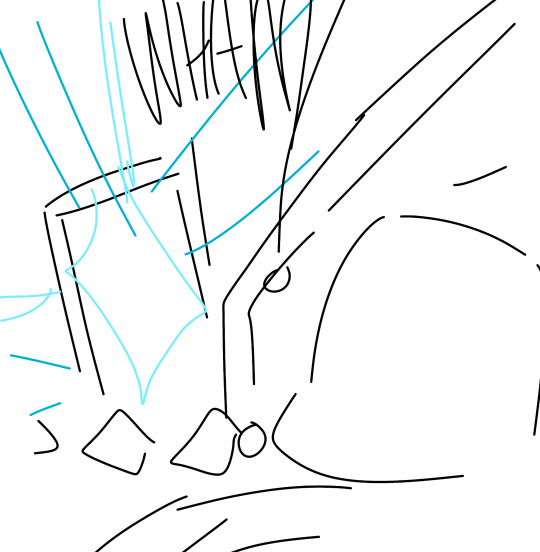


Shitposting
Tarnish and Shibuichi belong to @umberrosaline
#my art#art#cluelesshorsedraws#oc#doodle#scrap comic#digital art#dragon#illustration#comic#oc: deema#oc: pedamus#oc: neiro#oc: mosum#oc: Tarnish#oc: shibuichi
3 notes
·
View notes
Text
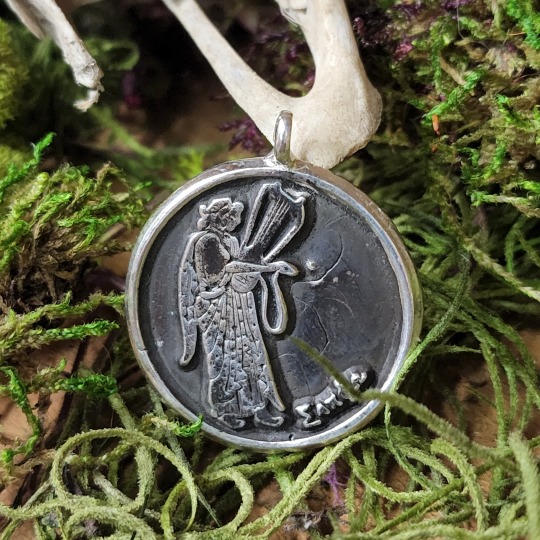


The first of the four designs from my 2022 Pride Line: Sacred Sappho, divine ancestor of women who love women.
Sappho, on the off chance that you don't know her, was a poet from the island of Lesbos in the Aegean Sea, who lived and wrote in the seventh and sixth centuries BCE. Her work was taught as a pinnacle of poetic skill for centuries, well into the Roman Empire, until - through a combination of censorship, neglect, and luck - it was lost to the ages. No contemporary biography survives, and we are left with mere scraps of her estimated 10,000 lines of poetry, but her work has been associated with sexual love between women since the Hellenistic period. Now, she and the island from which she came are virtually synonymous with queer women and their experiences.
The image is based on one of the few surviving images of Sappho, a black figure vase painting from the late 6th century BCE.
* Made of solid .925 sterling silver or shibuichi (an art metal alloy made of 3:1 copper:silver), yellow brass, or red bronze.
* Available as a coin, with an upeye for use as a pendant, or with three jump rings for use in a rosary-style necklace.
Each piece is hand-made to order in my home studio, with unique variations and defects as a result of the fabrication and casting process.
#Sappho#Pride Jewelry#Jewelry Art#Jewelry#Art Jewelry#Queer Artist#Queer Jeweler#LGBT#Sorcerers Workbench
33 notes
·
View notes
Text
Fabulous find for #FishyFriday:
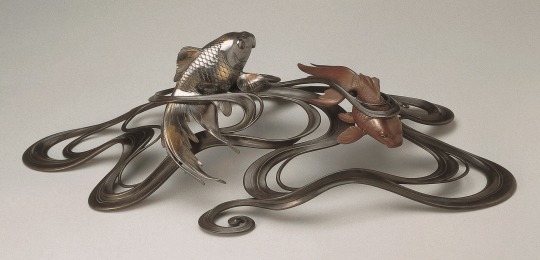
Oshima Joun (Japanese, 1858-1940)
Ornament of Fish in Waves (Okimono), c. 1900
bronze, silver, gilt, shibuichi and shakudo
13.1 x 48.7 cm
Khalili Collections M159
"An okimono of stylized bronze waves among which swim two shubunkin, one cast in richly patinated copper, the other in oxidized silver with partially gilt areas, the eyes of shibuichi, shakudo, and gilt. The fish naturalistically modelled, supported by the highly stylized waves.
Oshima Joun (1858-1940), given name Yasutaro, was the son of the cast-metal worker Oshima Takajiro, whose father Yasubei had started the family business. He succeeded to the business in 1877 and took the name Joun. He used the go Shokaken.
He rapidly built up his business, and in 1879 had eleven assistants, selling mainly through Murakami Heishichi and a French client. Later he worked through the commissioner Honda. He first exhibited in Paris in 1878. In 1879 he was working with the Sanseisha Company of Tokyo, specifically on the great bronze figure of the Dragon King of the Sea, made for the Second National Industrial Exposition of 1881, that is so markedly similar to the figure M 17 in the Collection by Otake Norikuni (see Impey and Fairley, The Dragon King of the Sea, No. 11). He taught at the Tokyo Art School from 1887 until 1932.
A similar but slightly larger group of five carp was exhibited in the Paris Exposition of 1900, illustrated in the Fine Arts Magazine catalogue. Another similar silver group of carp was exhibited in the Japan-British Exhibition of 1910, illustrated on p. 184 of the English version of the catalogue, where it is listed under the name of the exhibitor Yezawa Kingoro, whereas in the (unpaginated) Japanese edition it is under the name of Oshima Joun. He was praised for his renditions of carp by Harada in ‘Metal-work’ p. 101.
O. Impey, M. Fairley (eds.), Meiji No Takara: Treasures Of Imperial Japan: Metalwork Vol II, London 1995, cat. 102. J. Earle, Splendors of Imperial Japan: Arts of the Meiji period from the Khalili Collection, London 2002, cat. 198, pp. 284–5."
#fish#metalwork#silver#bronze#okimono#Japanese art#East Asian art#Asian art#decorative arts#Oshima Joun#1900#19th century#20th century#Fishy Friday#Khalili Collections#animals in art
60 notes
·
View notes
Text
My God is taken from the upcoming album, The Pilgrim, Their God and the King of My Decrepit Mountain, which is out on Friday 26th January 2024 on Heavenly Recordings.
Video created by David Allen of Everything Is Terrible
Music Produced by Yuri Shibuichi Music Engineered by Hywel Pryer Tapir! are Ike Gray, Wilfred Cartwright, Emily Hubbard, Ronnie Longfellow, William McCrossan, and Tom Rogers-Coltman.
Follow Tapir!
Spotify: https://open.spotify.com/artist/7dYpl...
Bandcamp: https://tapir-exclamation-mark.bandca...
Instagram: https://www.instagram.com/tapir_band/ https://heavenlyrecordings.com/
#claymation#everythingisterrible#music video#stop motion#tapir#heavenly recordings#london#london music#fantasy
14 notes
·
View notes
Text
Urusei Yatsura OVA 1: Inaba the Dreammaker
Written by Kazumi Koide & Toshiaki Imaizumi
Storyboard by Setsuko Shibuichi & Tsuneo Tominaga
Directed by Tsuneo Tominaga
Animation directed by Yukari Kobayashi

3 notes
·
View notes
Photo


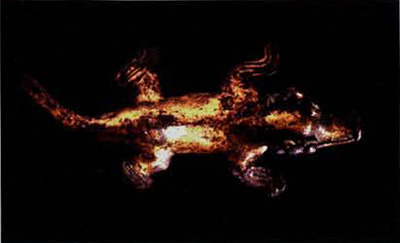

The Gold-Silver-Copper Ternary System
Phase Poll #6 concluded over a week ago, but I’ve been busy so you’re getting the write up post now! As stated in that post, I’ve already written up a post on colored gold alloys, so I won’t focus too much on the phase diagram in general, instead talking about the composition chosen - and you guys sure didn’t make it easy on me! The final result had copper as the clear favorite, coming in at 61%, with silver at 27% and gold at 12%, which puts us outside the realm of commercially manufactured jewelry.
Gold jewelry is often categorized by the karat system, in which the percentage of gold in a piece determines it's number (whereas the number of karats is the fraction of gold out of 24 parts). The highest purity gold is 24 karats (24/24), and the lowest the scale goes is 8 karats (8/24 or 33.3% gold), which is still far above our composition. (Some places only go as low as 9K or 10K, so 8K jewelry may be difficult to find in your region of the world.) So, there isn't any gold jewelry that contains so much copper and silver - it's not really gold anymore at that point. On the silver side, the case is much the same; sterling silver is an alloy of 92.5% silver and often 7.5% copper, but rare is the occasion where more than 50% copper is mixed with silver.
Looking at phases instead of resulting colors, the composition chosen falls into the immiscibility field of the ternary diagram (image 2 or source 1). High gold alloys form a solid solution of all three elements, but copper and silver are immiscible. Depending on the processing, therefore, these elements can be maintained as solid solutions if cooled quickly, or will result in a two-phase alloy at equilibrium, one phase of which is copper rich while the other is silver rich.
Mixing copper with gold can increase the hardness, and the same happens when mixing copper and silver together. However, copper and silver are both more reactive than gold, which is why this corner of the phase diagram isn't much used for jewelry - it corrodes too easily, compared to the alloys that contain more gold. This is also why adding gold or silver to copper (instead of copper to gold or silver) isn't nearly as common, given the cost of gold and silver offsets any advantageous property difference.
Still, stepping away from gold alloys and silver alloys, there are a few historic copper alloys that come close to our composition, so let's take a look at those and their uses. First, a few Japanese alloys, Shibuichi and Shakudō. Shibuichi is an alloy of copper and silver, literally meaning 'one-fourth', and is thus one part silver to three parts copper. Shakudō is an alloy of copper and gold, typically ranging from 90-96% copper. Both were used for decorative purposes, taking advantage of the color of the patina that could be formed on such alloys.
In another part of the world, pre-Columbian cultures in South and Central America often created religious objects of an alloy of gold and copper that the Spanish Conquistadors named tumbaga. Artifacts from this era vary widely in composition, with some having as much as 97% gold and others up to 97% copper. Because of the natural compositions of gold and copper ores, silver is often present as well. The third image above is a tumbaga artifact of mostly copper, and around 20% gold and 2% silver. Again, because of corrosion of copper (and silver), these artifacts are difficult to find in good condition - however, counter to that, metallurgists of the era used a technique called now called depletion gilding to create a layer of pure gold on the surfaces of these objects, protecting them from corrosion, at least for a time.
In modern times, alloys in this range are still not widely used. Copper and gold alloys have been investigated for nanotechnology systems, but, to my knowledge, this corner of the ternary system is often avoided.
Sources/Further reading: ( 1 ) ( 2 - image 2 ) ( 3 - image 3 ) ( 4 - image 4 ) ( 5 ) ( 6 ) ( 7 ) ( 8 )
More phase diagrams: ( image 1 ) ( wt% with T lines ) ( mole fraction, liquidus projection ) ( mole fraction, 800°C ) ( Ag - Au ) ( Ag - Cu ) ( Au - Cu )
#Materials Science#Science#Phase diagrams#Phases#Copper#Silver#Gold#Alloys#Jewelry#Science history#PhasePosts#MyMSEPost
12 notes
·
View notes
Photo
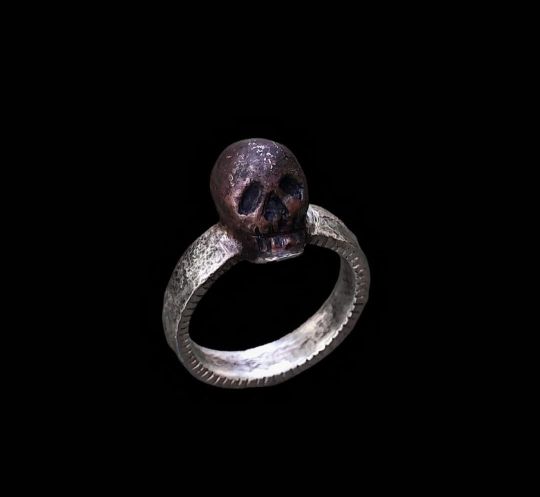
-Forgotten Skull- *Available via DM* -Material: 999 silver, 950 silver, Shibuichi (skull) Size: 8us (I can resize) The Skull is made of Shibuichi and will change depending upon the environment it will be exposed to…It will morph as you will morph. #skullring #mementomorijewelry #ooakjewelry #death #darkartists #artisanjewelry #skull https://www.instagram.com/p/CfDAH-8OgZ4/?igshid=NGJjMDIxMWI=
3 notes
·
View notes
Photo

Tiebar - Ichimatsu shibuichi 市松模様のタイバー material: sv950, shibuichi #tiebar #silverwork #shibuichi #ichimatsu #タイピン #市松模様 #四分一銀 https://www.instagram.com/p/Cl04n9yrjXV/?igshid=NGJjMDIxMWI=
0 notes
Quote
Color is given more to meditation than to spectacle. Understated, not innocent. Subdued colors, muddied with gray tones create a silvery effect. (Shibuichi is a billon metal alloy with a silver-gray appearance.) In interior decorating and painting, gray is added to primary colors to create a silvery effect that ties different colors together in a coordinated scheme. Depending on how much gray is added, shibui colors range from pastels to dark. Brown, black, and soft white are preferred. Quiet monochromes and sparse subdued design provide a somber serenity with a hint of sparkle. Occasionally, a patch of bright color is added as a highlight.
The seven elements of shibusa are simplicity, implicity, modesty, naturalness, everydayness, imperfection, and silence.
Shibui - Wikipedia
0 notes
Photo



COYUNTURA Necklace
Basalt, shibuichi
©️2021, Martin Carreño Mendoza, All rights reserved
0 notes
Photo

← mechanistic →
2 notes
·
View notes
Text
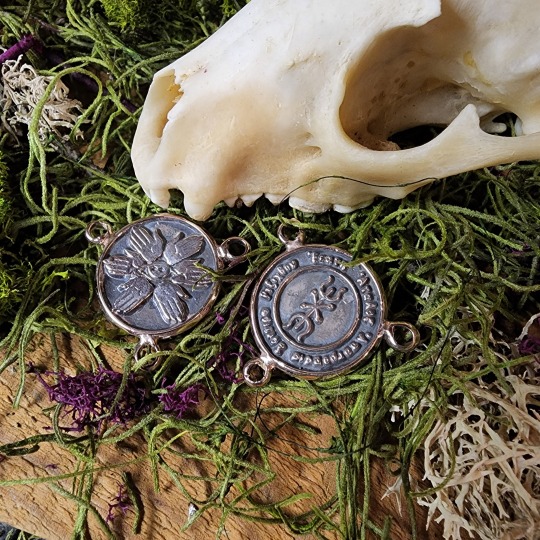
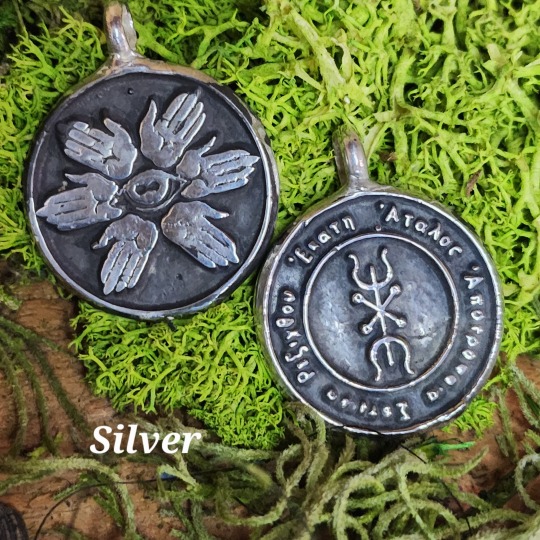

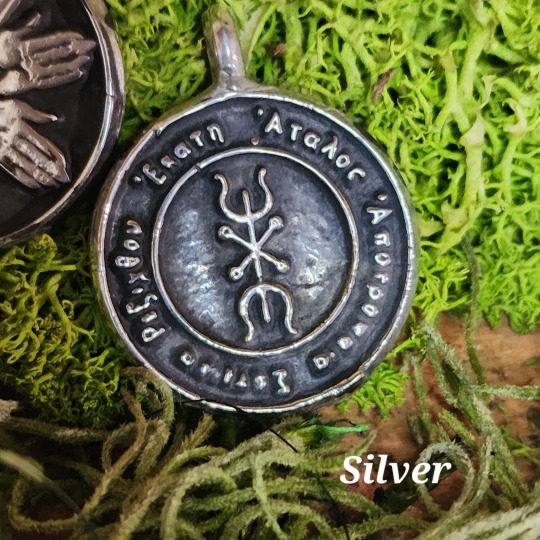

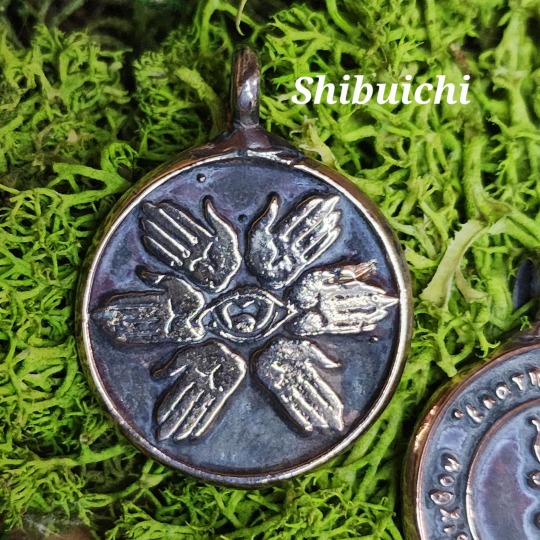

Two-sided silver talisman with an image of Hekate on one side -- "O Six Hands crowning a flaming eye,/ Extending in every direction;" from Jack Grayle's Hekataeon, Rite 4: De Forma -- and her crossroads sigil, name, and six epithets in Greek -- "Hekate, Atalos, Apotropaia, Soteira, Rexichthon" -- on the reverse.
* Made of solid .925 sterling silver, shibuichi (an art metal alloy made of 3:1 copper:silver), yellow brass, or red bronze.
* Available as a coin, with an upeye for use as a pendant, or with three jump rings for use in a rosary-style necklace.
Each piece is hand-made to order in my home studio, with unique variations and defects as a result of the fabrication and casting process.
These talismans are NOT consecrated. That is your responsibility.
#Occult Art#Talismanic Jewelry#Hekate#Hekataeon#Hellenic Polytheism#Hellenic Pagan#Witchcraft#Pagan#Jewelry#Art#Art Jewelry#Jewelry Art#Witch Jewelry#Queer Artist#Queer Jeweler#LGBT#Sorcerers Workbench
14 notes
·
View notes
